After a long winter, spring-flowering bushes give gardens yellow blooms. Besides filling eyes with colors, they set a peaceful mood. If you are planning on growing them, learn the basics of pruning forsythia first.
Forsythia bushes have many virtues. Not only are they fast-growing, but also hardy and easy to cultivate. When properly trimmed, those plants can work as a real, stunning garden asset.
Furthermore, forsythia blooms appear before the foliage. This makes trimming a challenge.
As the flowers start to fade, you certainly think about pruning those plants the right way. Without further ado, check this out!
What Are Pruning Forsythia?
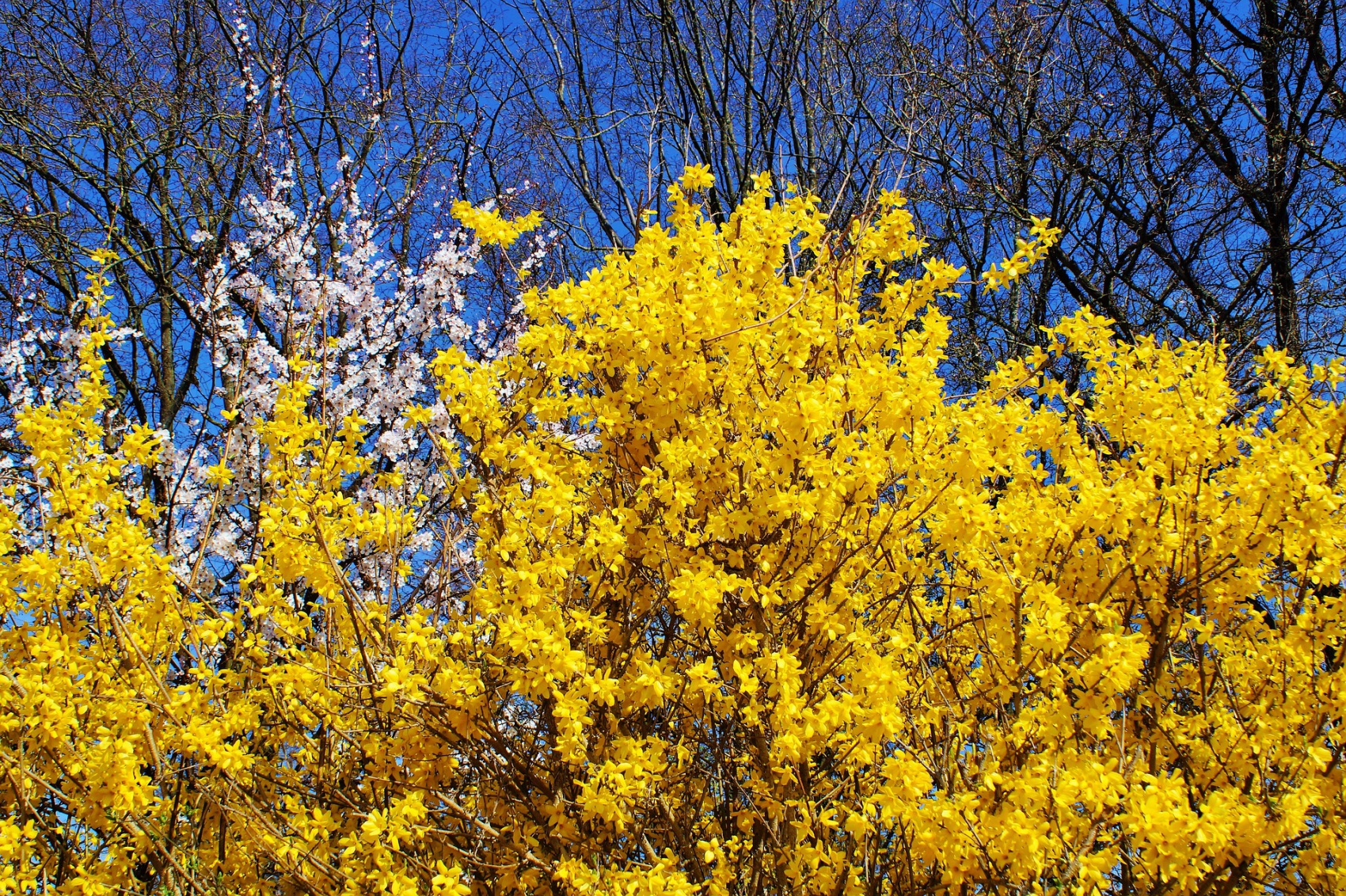
Forsythia is tough shrubs cultivated for the vibrant yellow blooms. They produce flowers in early spring and normally act as screen plants. Many gardeners love them due to their amazing durability.
In general, forsythia bushes reach heights of 3 meters (10 feet) at maturity and spread as wide. Since they are mature in less than a decade, trimming is crucial to prevent their wayward growth.
Moreover, the blooms of forsythia precede the foliage. That means the gardeners get a sunny sight without leaves to hinder their views. The flowers also beautifully cover arching branches.
Decomposed organic manure and garden compost can be used to feed the forsythia plants. If the soil conditions are quite dry, give them a good amount of water. Generally speaking, they only require little care.
Forsythia Growing Mistakes

Before pruning forsythia, you should know how to grow the plant. Without a great start, the proper trimming won’t work at all for sure.
If you are looking to plant forsythia near the front entryway or under the kitchen window, please think twice. Here are two common mistakes with that perennial shrub.
1. Shape Matters
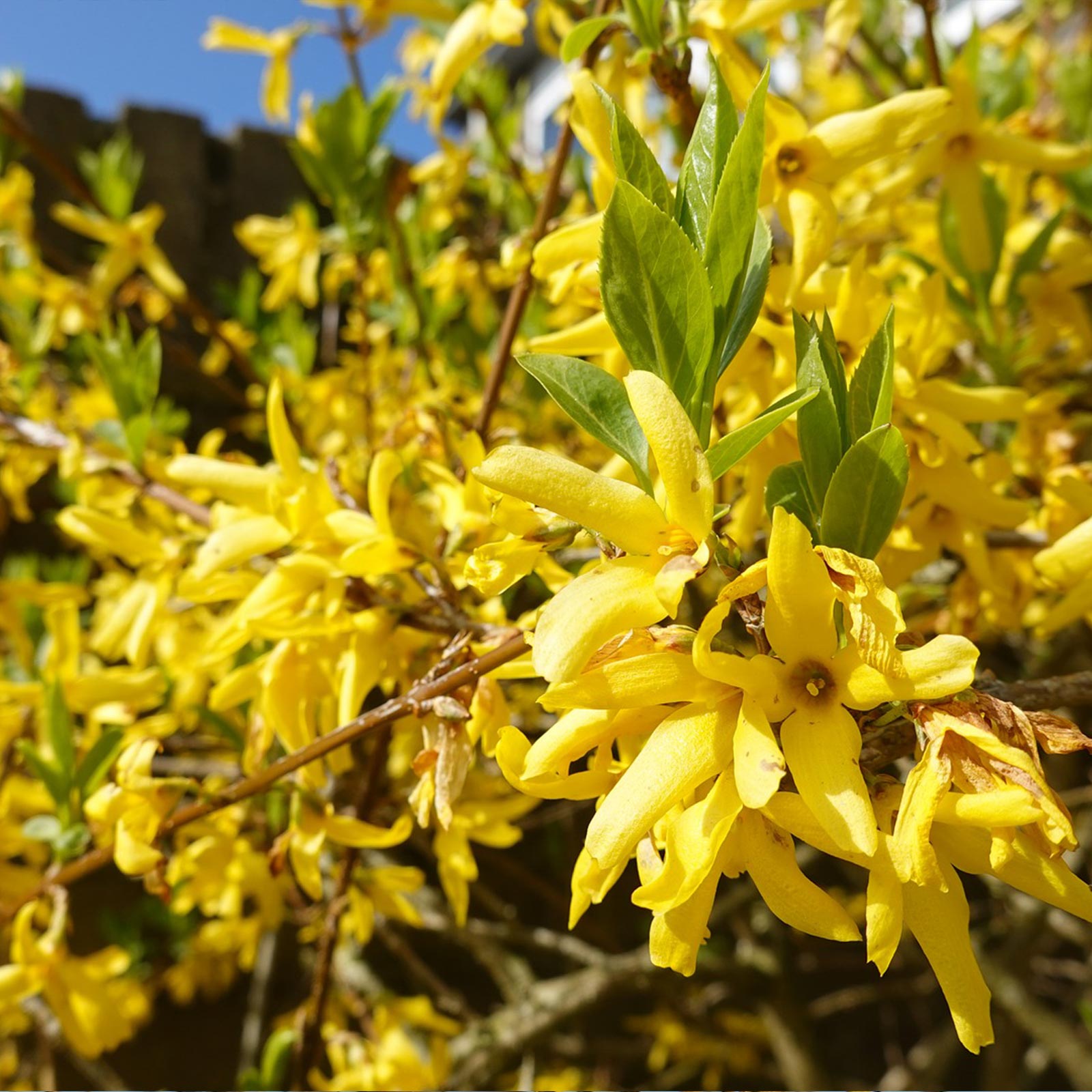
Forsythia bushes are meant to boast wonderful, arching branches. You cannot simply remove them at your desired width and height.
If you insist on pruning forsythia branches brutally, be ready to face a problem. There will be more of them at the trimmed tips. Additionally, your plant transforms into a square shrub or odd-looking ball.
Your forsythia shrubs may fit well in your preferred spot. However, snipping their branches off without caution will ruin the shape of the plants that are as vital as the gorgeous blooms.
When it comes to growing and pruning forsythia plants, put their shape and color into your consideration. That way, you won’t end up with the unruly shrubs.
2. Size Matters
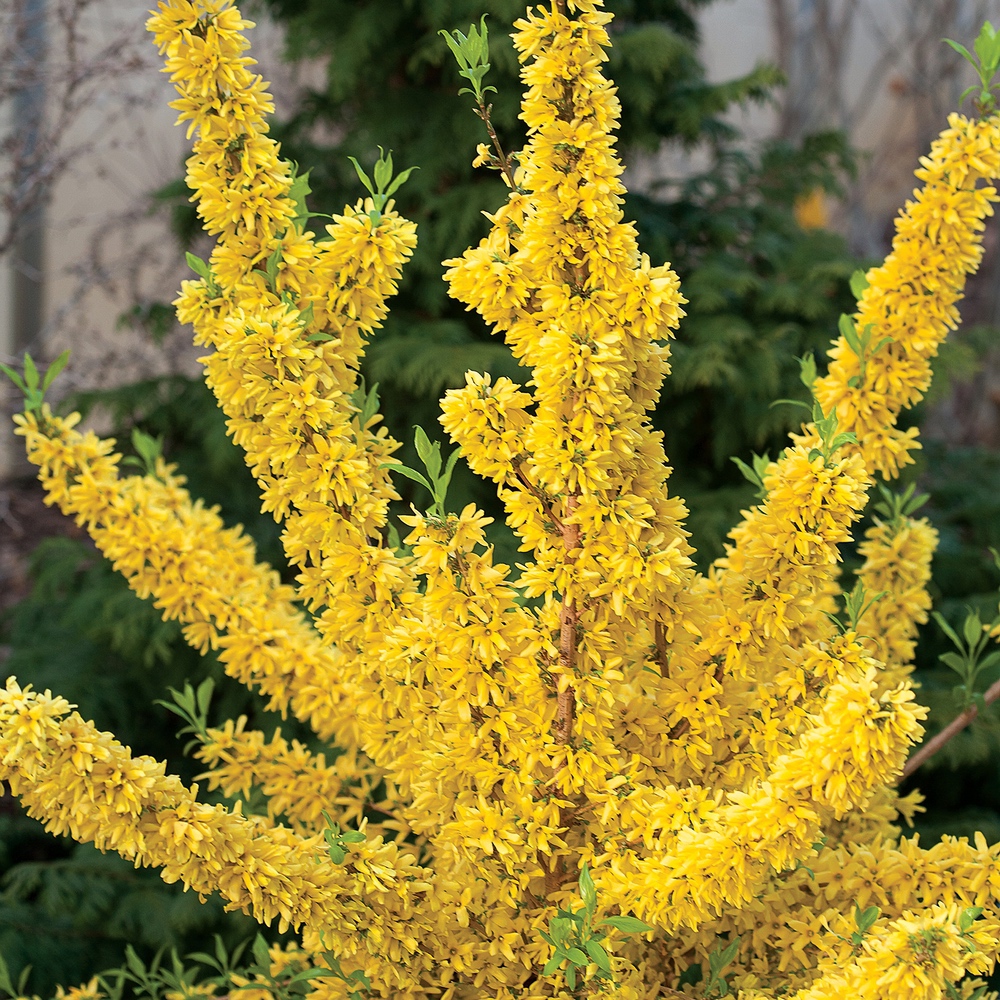
Forsythia is well-known for its natural, mesmerizing arching habit. As the plants mature, they have an irregular round shape.
Moreover, forsythia bushes can grow 7 to 10 feet tall and spread as far. Make sure you do not plant them in the pocket-sized garden beds that are just 2-3 feet wide, therefore no pruning goes useless.
Remember to give those shrubs plenty of growing space. By doing so, the forsythia plants will show off their vigor and lend your garden a great look.
Some gardeners loathe forsythia because those bushes get unruly as they mature. If you grow them with their maximum size in mind, the plants can be the centers of attention.
Useful Tips for Trimming Forsythia
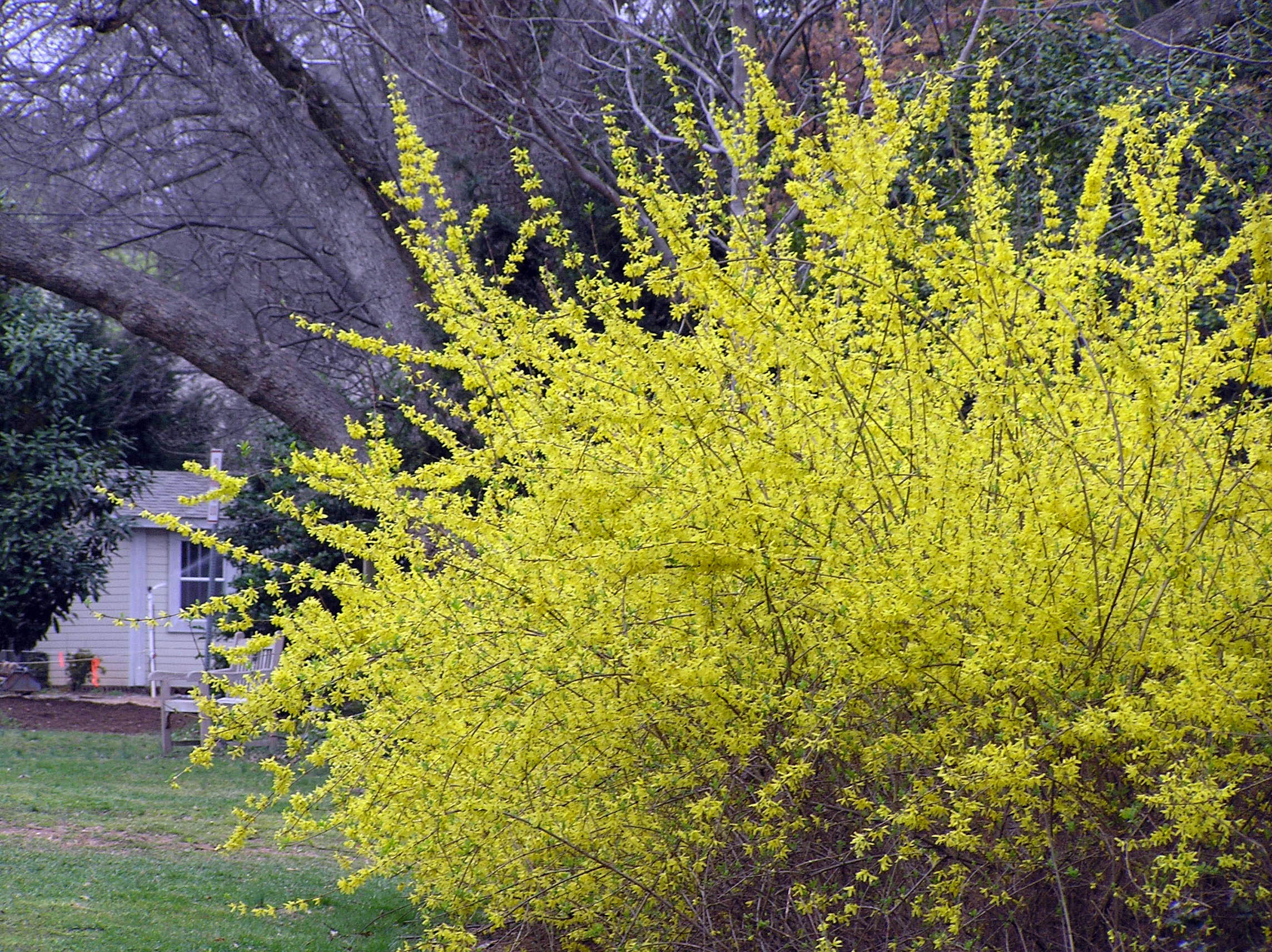
When planting, bear their growing habits and size in mind. This makes you so ready for pruning forsythia. Just do it at the right time.
To obtain a well-shaped shrub, you should provide plenty of room for your forsythia bushes, so they can spread and reach maturity comfortably. The pruning job itself needs some basic tips.
Probably, you look at those forsythia plants and want to crop almost entire bushes and let them grow again. Although many landscapers and gardeners do this, stay away from drastic pruning if possible.
In case you have out of control forsythia bushes that have been overlooked for years, hard pruning is deemed necessary. However, general trimming normally requires a touch of finesse.
1. Gardening Implements for Pruning Forsythia Bushes
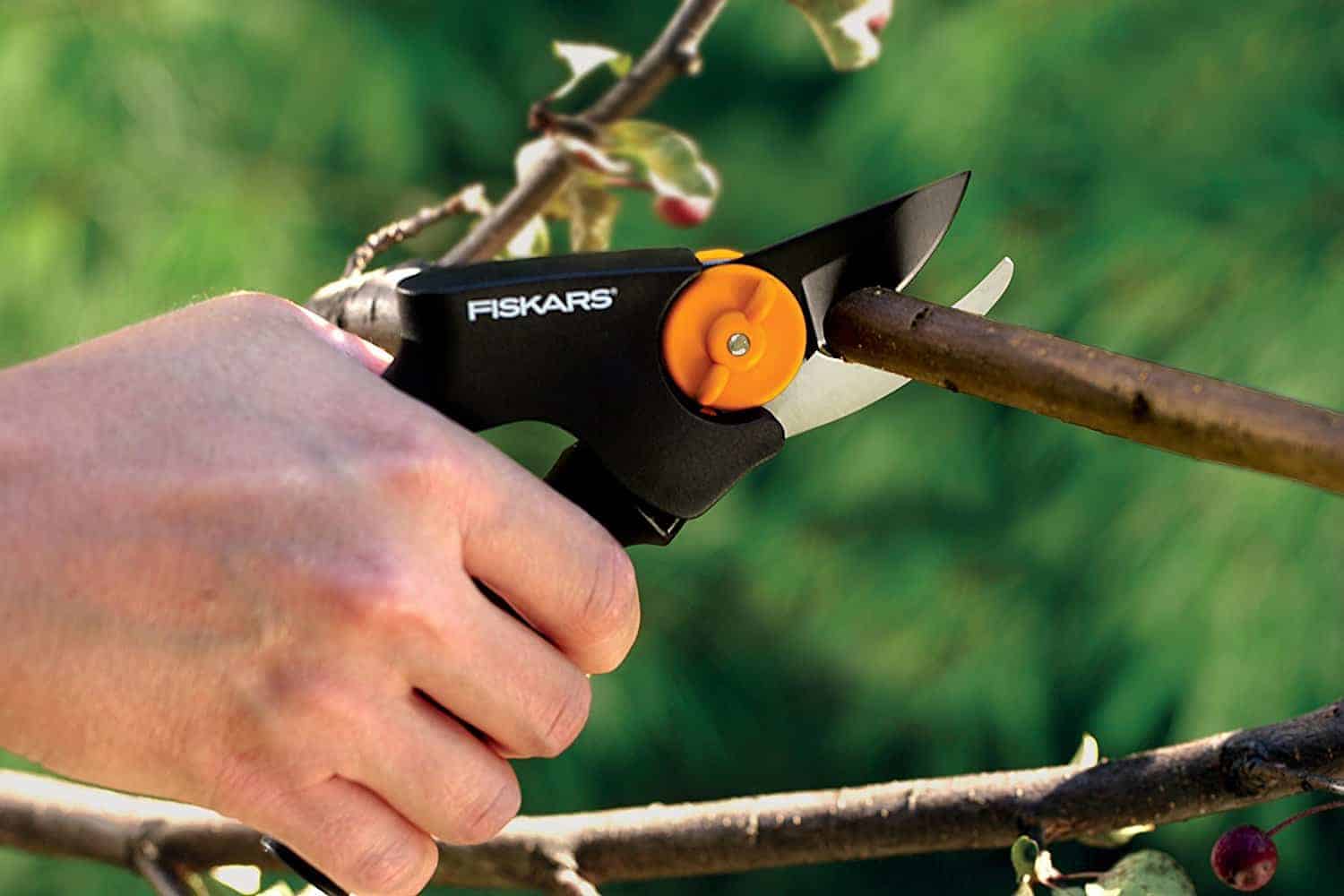
Before pruning forsythia, you need to prepare the gardening tools first. They depend on how mature your plants are. Small young canes can easily be eliminated with bypass pruners.
On the other hand, old canes are normally about 1 inch (2.54 cm) in diameter. That’s the reason they can only be removed using more rugged gardening tools. To make the trimming job easier, you must utilize a pair of long anvil loppers.
2. Get Rid of Large Mature Canes
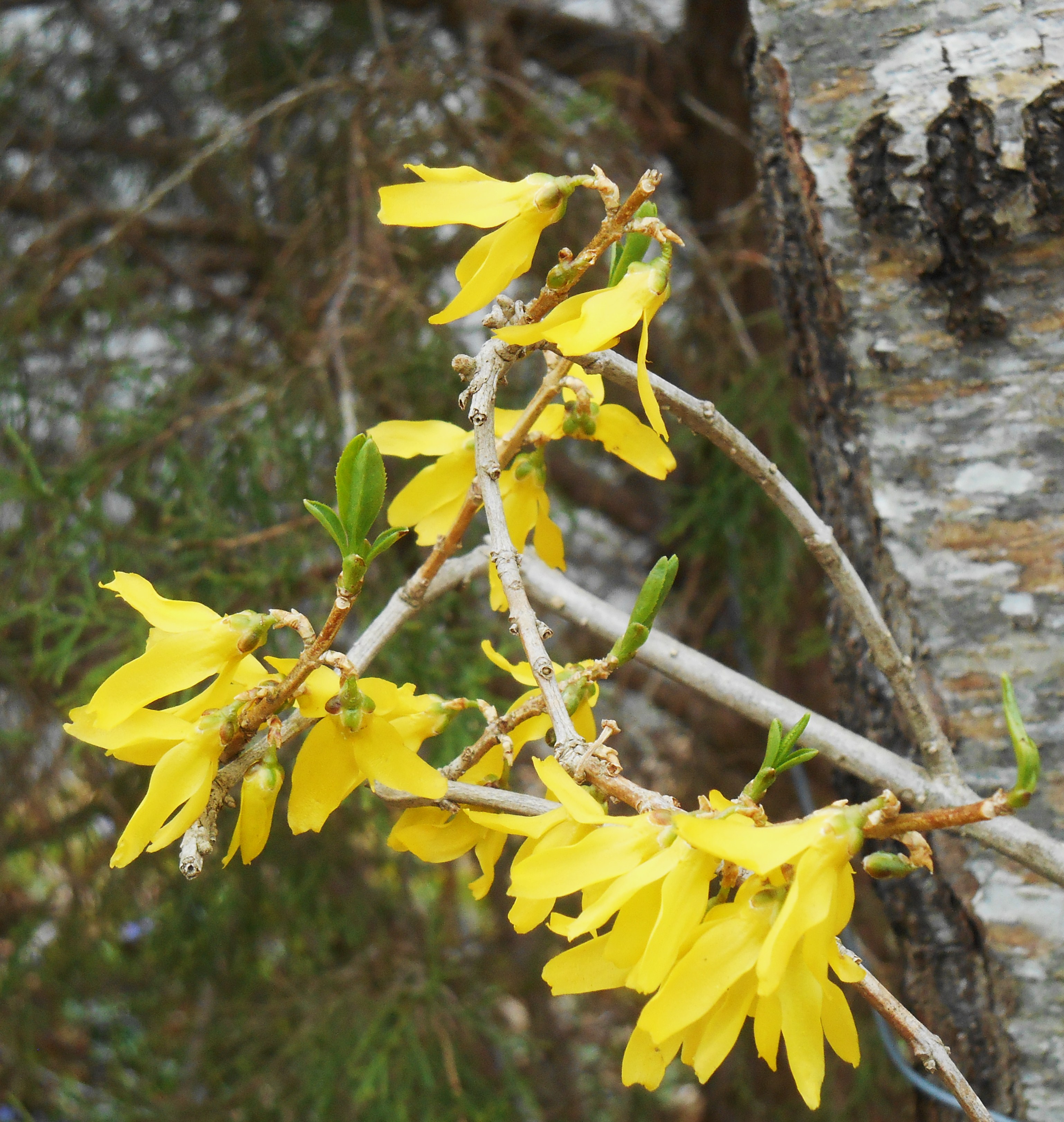
With regular pruning, you can enjoy your attractive forsythia plants for years to come. This also keeps them from being overgrown in the garden.
Each spring, choose two or three oldest canes and then lop them off almost close to the ground. Pruning forsythia plants while they are still immature certainly helps manage their growth, plus those bushes always look graceful.
Removing the oldest branches will give new shoots some space. The trimming of mature center canes helps forsythia plants to open up slightly as they grow. Additionally, this enables natural light to hit their middle part.
If sunlight can reach the center of your plants, the blooms appear all over the bushes, not only on the outer tips. Therefore, pruning forsythia old canes will reward you with their neat look for many years.
3. Eliminating Split Canes
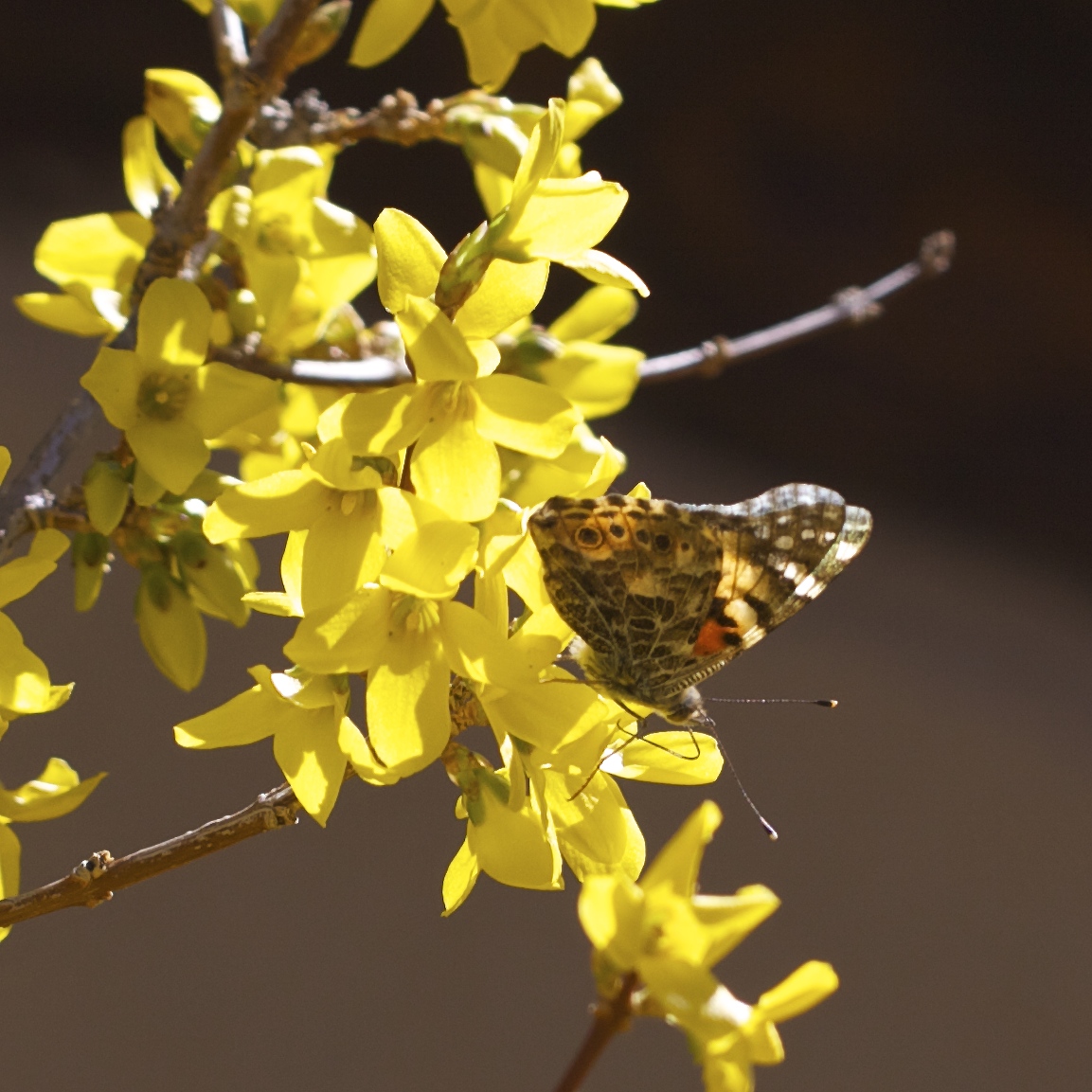
You have pruned out the canes of forsythia along their branch before. However, they were not trimmed at ground level. Chance is the plants will feature stems emerging from that tip.
To make your forsythia bushes neat, you must trim those split canes. By doing so, there will no straggling growth anymore.
4. Take Out Bent and Dead Canes
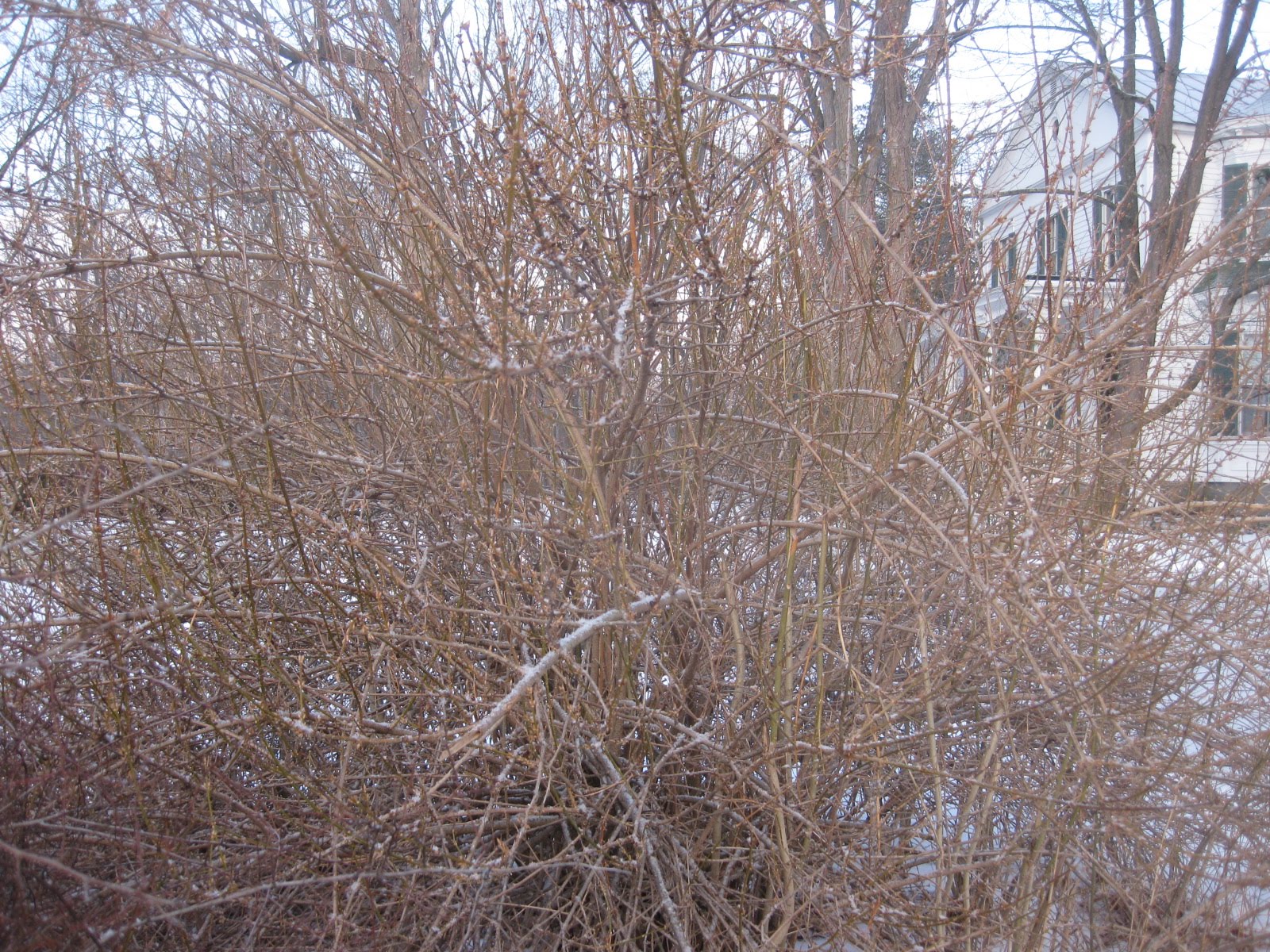
Since forsythia plants are perennials, as they mature, there will be dead branches for certain.
You may find out the canes that rub against one another and grow backward. With trimming, the bushes can retain their lovely arching shape.
Before pruning forsythia, don’t forget to examine the shrubs. The flowering usually begins in late winter.
During that period, you can imagine what their canes will look like with no blooms and foliage. They give an idea of a trimming job.
5. Low Growing Forsythia Canes
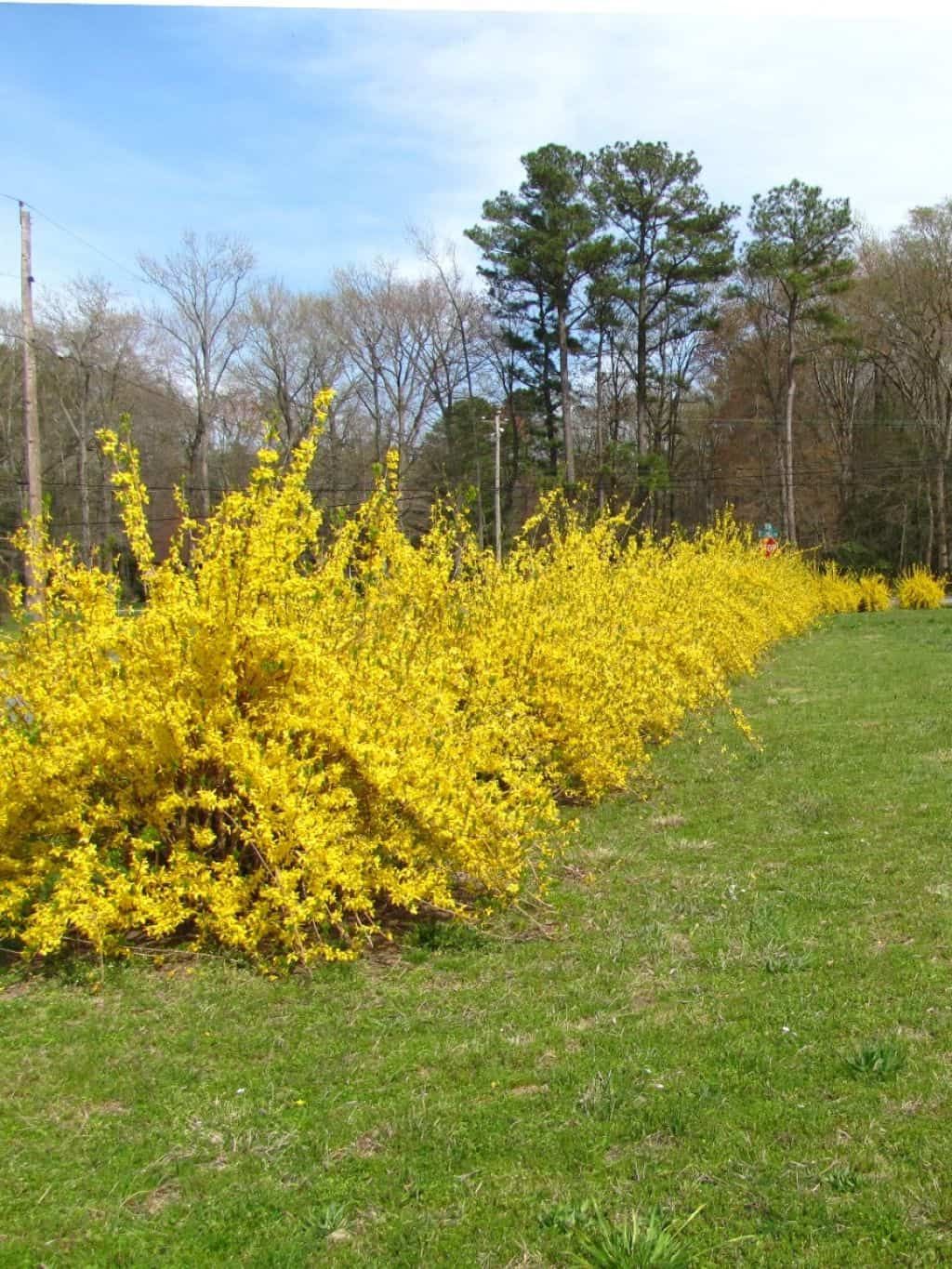
The forsythia shrubs probably have branches that almost touch the ground. Even some of them grow along with the garden soil.
Make sure you eliminate those low-growing canes, otherwise they produce roots.
If you don’t mind getting extra forsythia plants without doing anything, then go for it.
To enjoy their fabulous shape, removing the low growing branches is a safe bet. After that, plant those rooted canes in another garden spot.
The Right Time for Pruning Forsythia Bushes
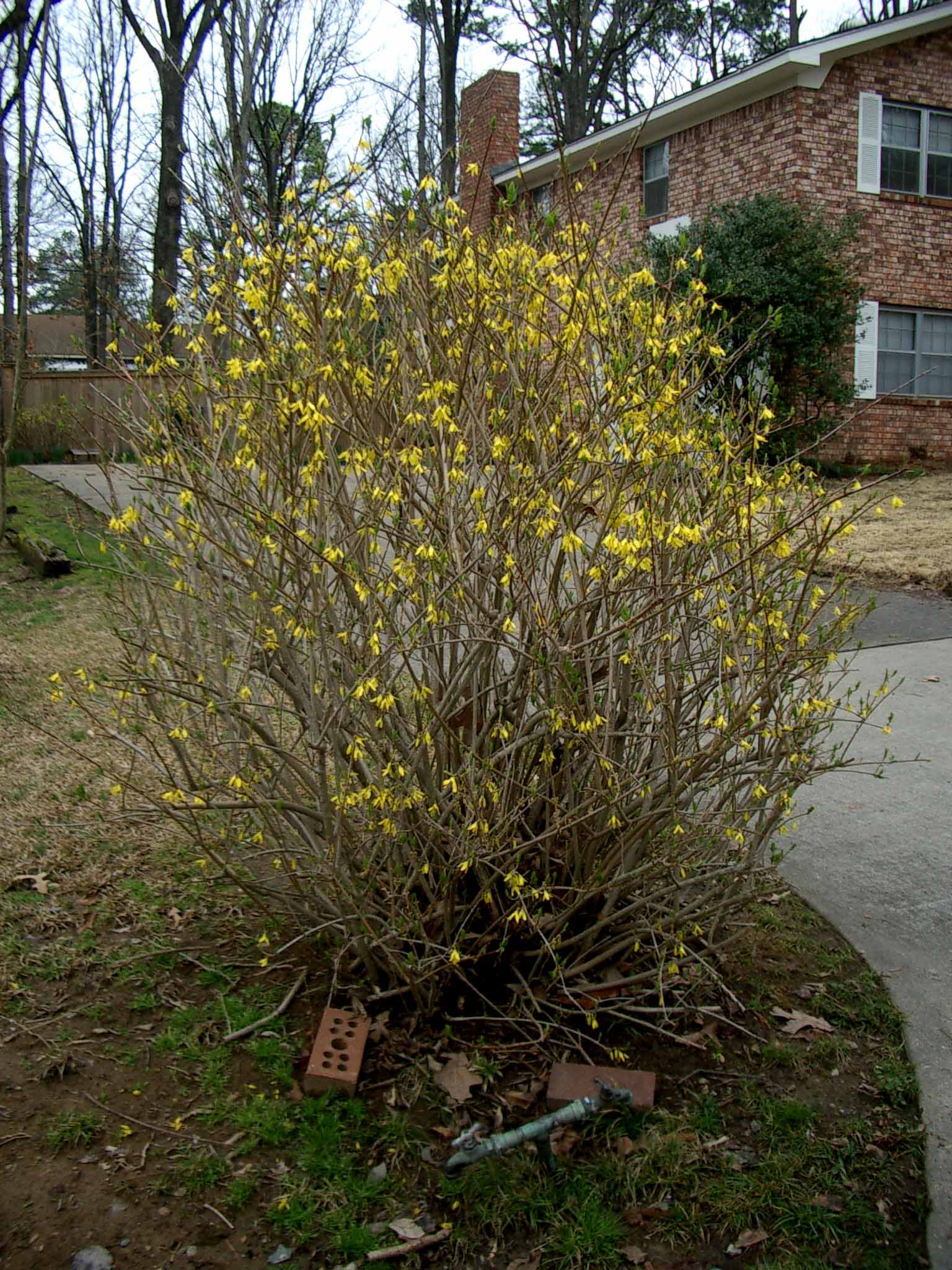
As with other perennials, forsythia must be trimmed in the spring, after their flowers fade. During the period, the foliage begins to develop.
The timing is not hard to remember. Just do the job soon after blooming. Avoid pruning forsythia in late summer since this decreases their flowers for the next spring.
Like azaleas and hydrangeas, the flowers of forsythia emerge on the old wood. That’s why spring trimming is a perfect option.
Pruning forsythia plants in the fall is not recommended, too. The late trimming will lead to low numbers of blooms during springtime because they send out flower buds right after the new growth emerges.
If you desire plenty of forsythia flowers, do not wait until late summer or even fall. With the proper pruning, the plants add their golden yellow blooms to your garden next year.
How to Prune Forsythia Plants

As we mentioned before, forsythia bushes reach maturity rapidly. That’s the reason you should give them the right trimming treatment. Luckily, it is truly straightforward.
When it comes to pruning forsythia shrubs, over trimming is not allowed for sure. Only get rid of one longest cane or two, and you are set.
Furthermore, immature forsythia bushes are not difficult to maintain. All they need is regular care.
Removing old canes let new shoots appear comfortably. This keeps your plants neat and delightful.
As the forsythia bushes grow, more of the canes should be snipped off. If you have old plants, remove one-fourth or one-third of the thickest branches near the ground.
For forsythia plants that are 5 or 6 years old, it is such a great idea to cut 20% of their oldest branches entirely, close to the ground.
Not only does this prevent them from being congested, but also lowers disease risk and enhances air circulation.
In case you have very old and unruly forsythia shrubs, trimming must be dramatic for certain. Crop the whole bushes to about 10 cm (4 inches) from the garden ground.
After pruning overgrown forsythia plants, the new shoots normally will become visible.
With proper trimming, they can be recultivated as well as rejuvenated. Moreover, within a couple of years, your garden has new bushes.
Pruning Forsythia Hedge
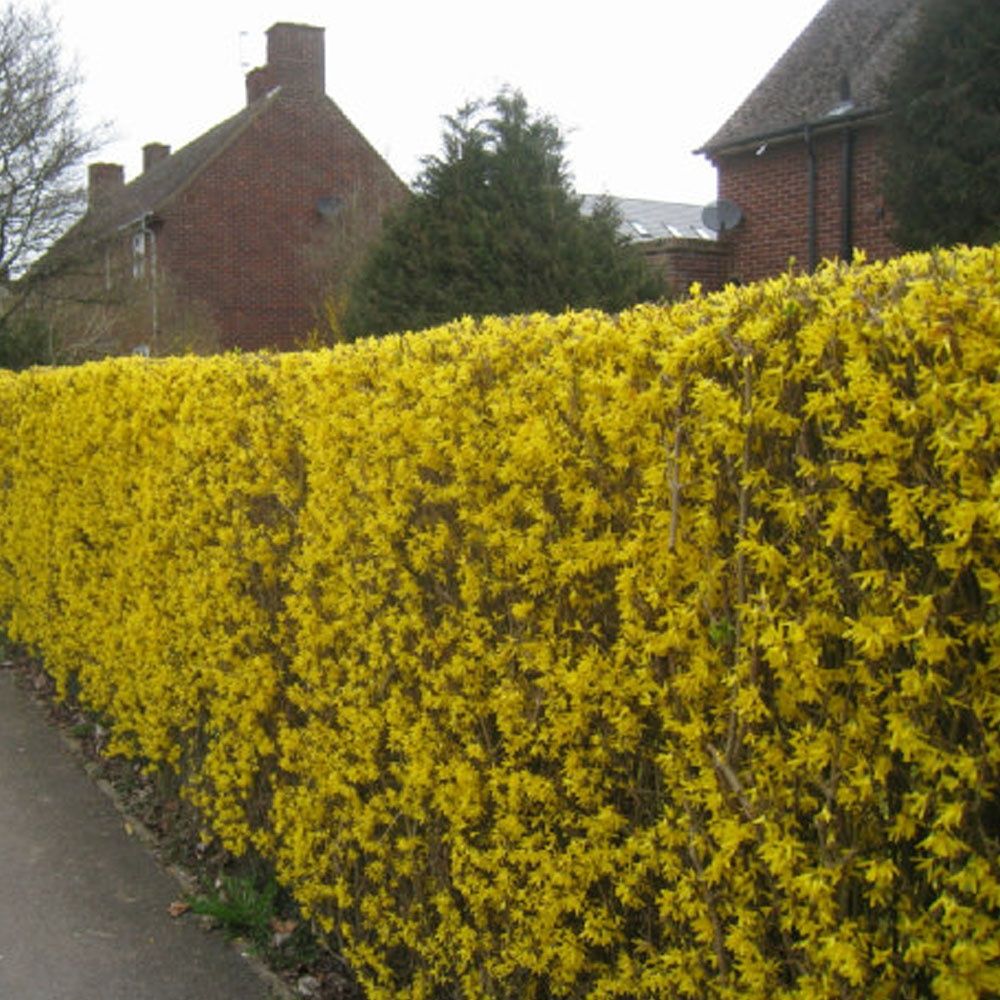
Even though some growers prune forsythia plants into hedges, we seriously do not recommend you follow the same route.
Since their branch tips need to be constantly snipped off, there will be much fewer blooms.
Forsythia shrub is a quite familiar choice of hedge plant. Many people become loathers after seeing the application. We agree with them, too.
Moreover, forsythia shrubs are not as loose as native hedges. Their trims are fairly untidy as well. The vibrant yellow flowers also seem a bit weird inserted in the fixed geometry of the hedge.
There are much better bushes for hedges than forsythia. Boxwood, hornbeam, yew, holly shrubs, privet, and beech are perfectly suited to your hedge style trimming job.
In case you insist on pruning forsythia bushes into formal hedges, be ready to trim them several times each year and lose their flowering potential. Bear in mind that the plants have a beautiful, naturally arching habit as well.
Pruning Forsythia into A Tree
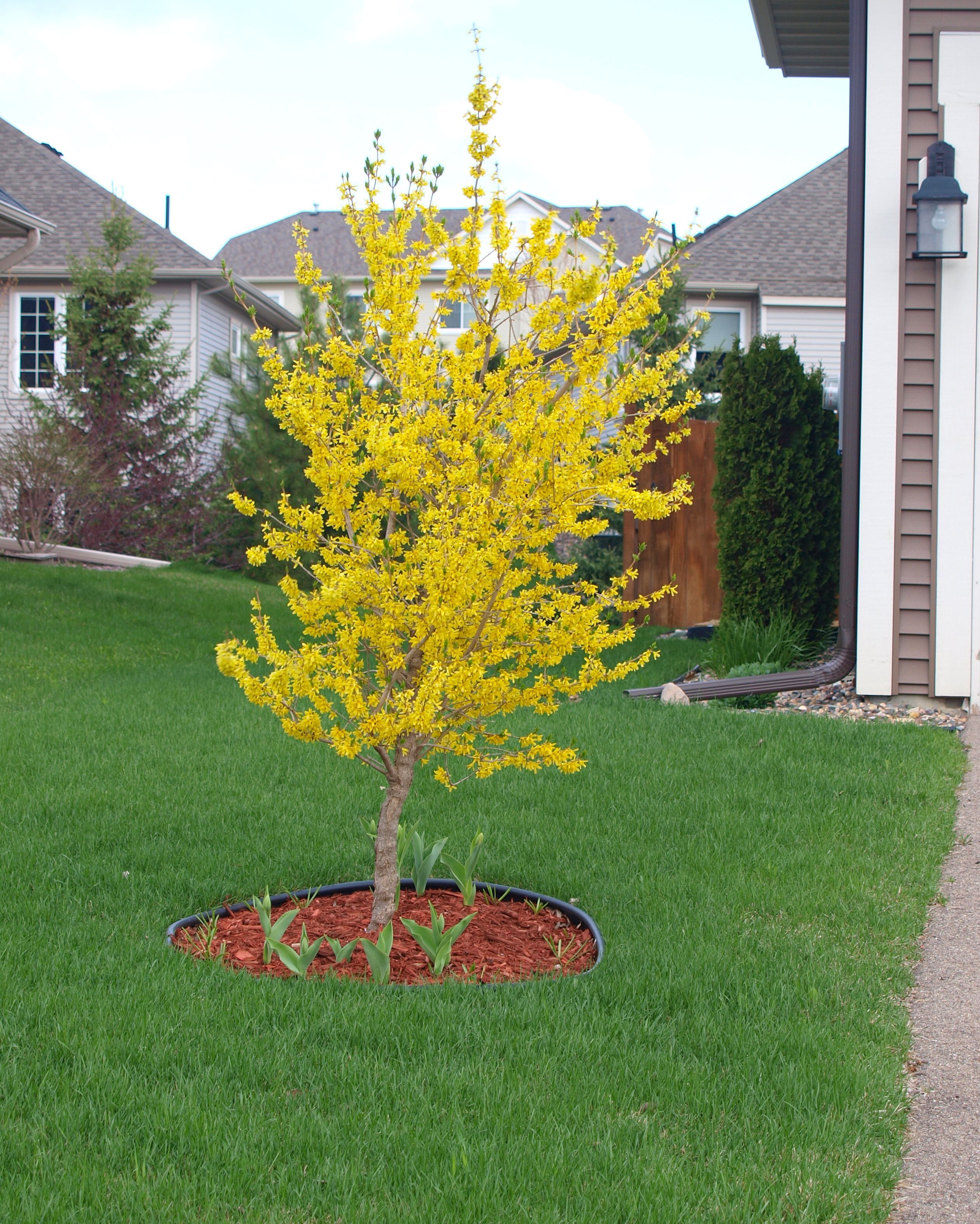
Some gardeners have good luck turning the normally large forsythia shrubs into decent single stems because of their premium growing space. They might only do minor trimming in the spring to shape theirs.
You are probably planning on pruning forsythia bush into a tree. Although some growers do that, please think again.
The wood structure of forsythia plants generally cannot support their height or weight. As they get huge, the big branches won’t be able to bear themselves.
Remember that forsythia shrubs do not grow that way. Pruning them into tree shapes eventually will cause the plants to fall to the ground. Additionally, you should constantly trim their tops.
Major Pruning
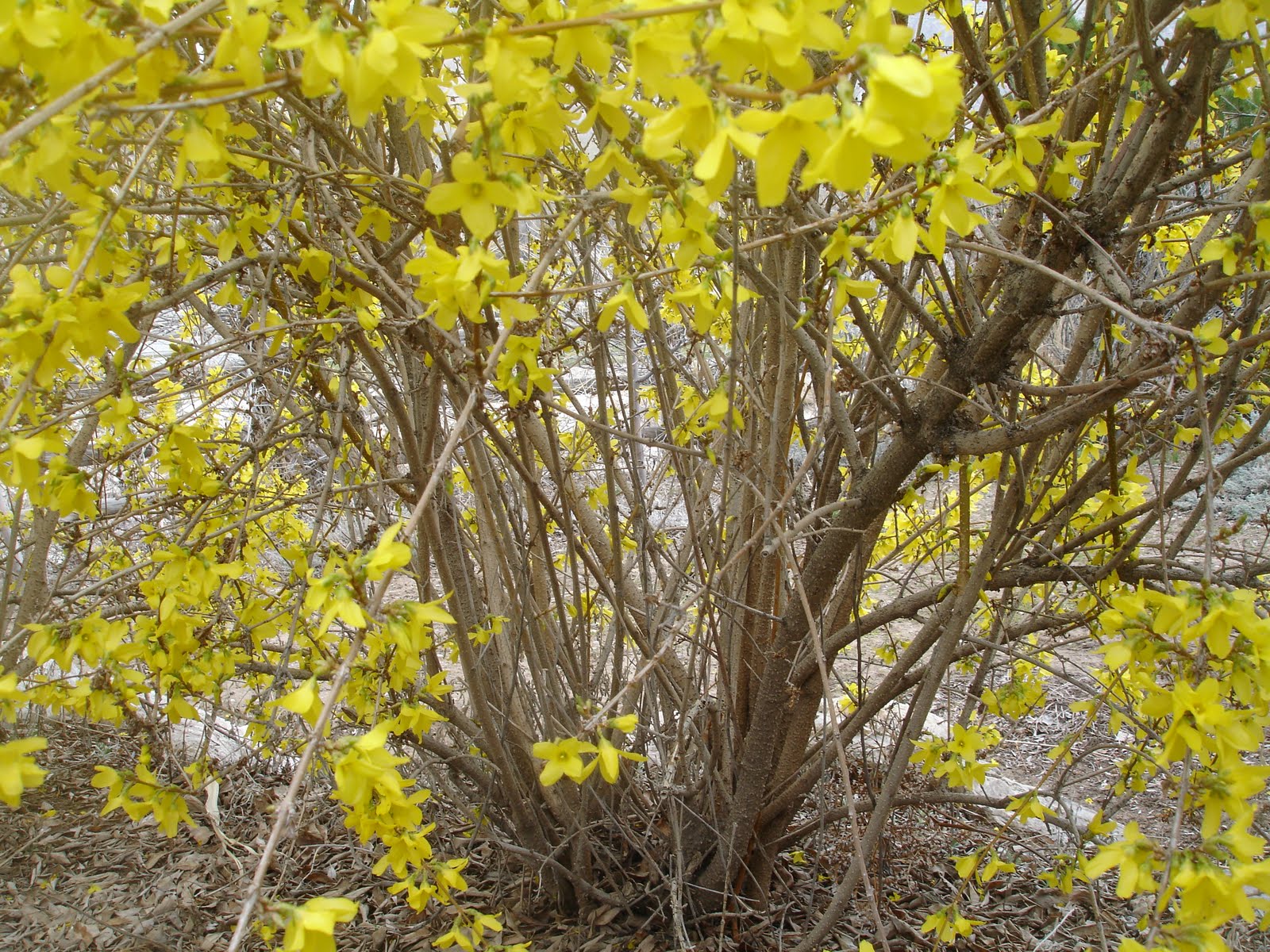
Your forsythia shrubs have been untended for several years. Now, they become an untamed mess. Don’t let them confiscate the garden beds. Fortunately, hard pruning will help manage the plants.
Talking about pruning forsythia brutally, you should chop the entire bush to about 4-5 inches (10-12.5 cm) off the garden ground. Once again, the subtle trimming must be forgotten since the plants are out of control.
After pruning forsythia dramatically, you don’t have to worry. The new shoots certainly will start to emerge.
With our pruning tips, their shapes can be more controllable. The process takes two years before they become flowering beauties.
If you opt for dramatic pruning, do the job in early spring or late winter because the forsythia bushes are still dormant.
There will be flowers that year for sure. However, watching how they renew themselves is equally amazing.
Forcing Branches of Forsythia Indoors During Colder Months
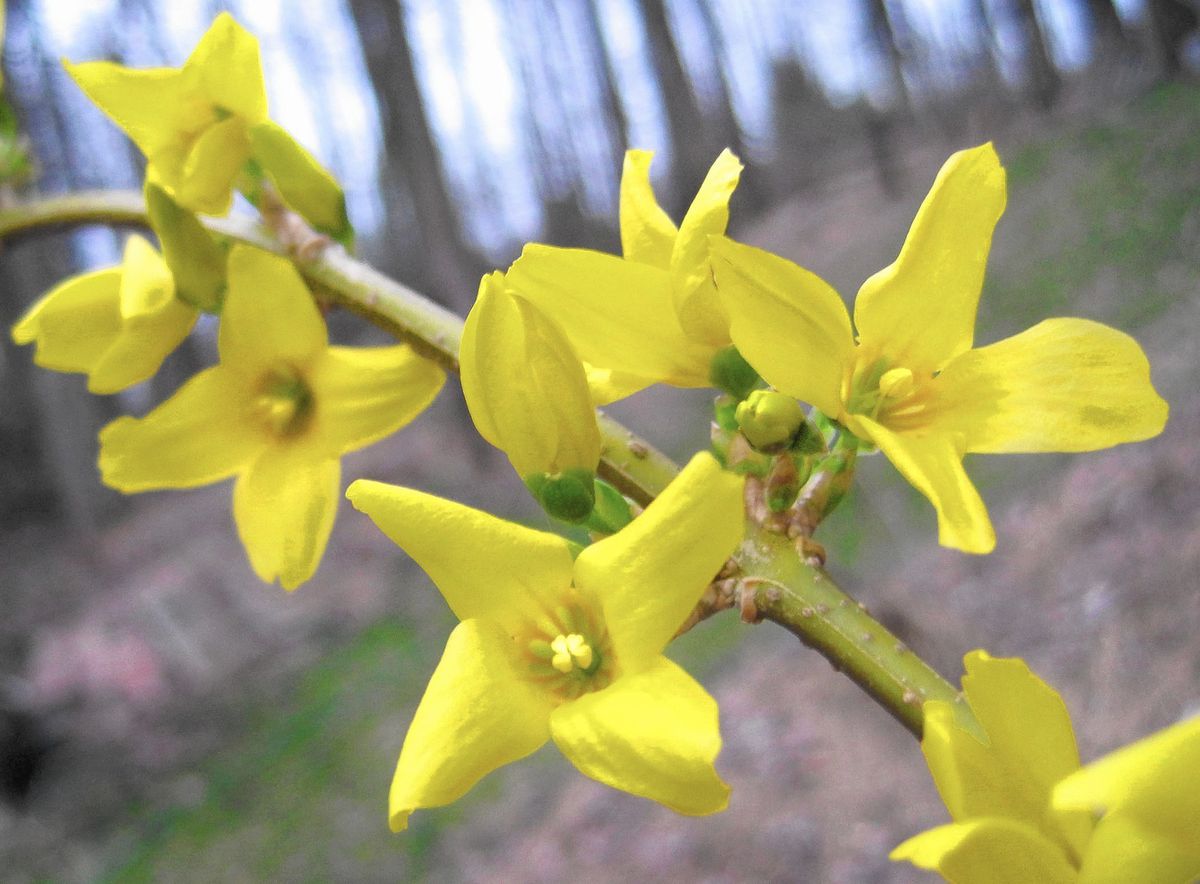
If you can’t wait for spring to come, consider forcing forsythia flowers indoors. The job can be done in February or March when snow still covers the ground or pruning forsythia in June.
First of all, you must prepare a bucket, floral preservative, and pruning shears. Pick the stems before above freezing temperatures. Then cut them less than 3 feet (90 cm) in length.
After bringing the stems home, fill the bucket with warm water. Place them in it. Next, snip 1 inch off the submerged branches bottoms. Let the forsythia soak up the liquid for 5-7 hours.
Change and refill the warm water in your bucket. Add in floral preservative and then mix everything thoroughly.
Re-cut the branches and put the bucket in a sunny spot. Keep misting as well as changing the water. Wait until the buds start to flower.
Pruning forsythia only takes 2 to 3 minutes each year in the spring, after the blooms have faded. By doing this diligently, you will reap your rewards for many years to come.